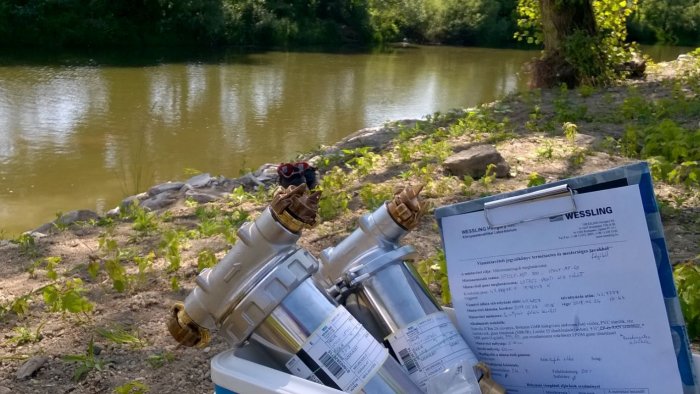Microplastic particles in Danube at record high levels

Of Hungarian rivers investigated so far, the highest concentration of microplastic particles was found in the river Danube: 50 ± 7.07 particles per cubic meter, corresponding to 0.05 particles per liter, with the size of the particles varying between 60 micrometers and 2 mm, according to measurements by Hungarian and German Wessling laboratories.
The measurements were part of the "Tiny Plastic Puzzle" (TPP) project. The project was launched in 2018 by Wessling Hungary Kft., a member of the international Wessling Group, for the examination of microplastic levels in the Danube and its tributaries. The results were reported at the project conference held at the Wessling Group Knowledge Center in Budapest in October.
In the environment, oceans and rivers, plastics disintegrate and form microplastics, particles or plastic particulates measuring one micrometer to five millimeters in size, contaminating the environment. The effects of microplastics on plants and animals are largely unexplored.
"Wessling is one of the few laboratories with the necessary know-how and equipment for analyzing microplastics in water and sediments, in foods, beverages or cosmetics. Together with partners from industry and science, our team of experts is driving forward the research on microplastics," Wessling says.
The results of earlier research have already shed light on the fact that, similarly to other places in Europe, it can be assumed that microplastics are present in the surface waters of Hungary as well.
According to the measurements of Wessling, the river Tisza contained 4.9 plastic particles larger than 300 µm per cubic meter at Dombrád, while 23.1 particles per cubic meter larger than 100 µm were found in the sample taken from Lake Tisza.
The detected particles mostly consisted of widely used polyethylene, polypropylene and polystyrene.
As a part of the TPP project, samples were first taken from the river Ipoly, where 1.7 particles per cubic meter were detected. According to Wessling, the relatively low level of microplastics in this case is presumably due to the fact that the river mainly flows through a national park, a long distance from industrial and urban influences. The number of microplastics detected in the river Rába was higher, at 12.1 particles per cubic meter.
In the Budapest measurements of the Danube, the concentration at the Megyeri Bridge (in the north) was 45 particles per cubic meter, measurably lower than the 55 particles per cubic meter found at the Csepel Freeport (in the south). These results mean that the capital, with its large population, surface runoff and sewage treatment plants, is a major source of microplastic pollution.
Similarly to previous measurements in Hungary, polyethylene, polypropylene and polystyrene, used for consumer goods and packaging materials, could be detected in the largest amounts in the Danube.
According to Wessling, the most important result of the TPP project is that it drew attention to the unfortunate presence of microplastics in surface waters in Hungary, while the corporate group showed that labs in different countries can cooperate efficiently.
The group has another research project running in Hungary, entitled "Development of freshwater microplastic sampling and sample preparation methods," implemented with support provided by the National Research, Development and Innovation Fund of Hungary.
SUPPORT THE BUDAPEST BUSINESS JOURNAL
Producing journalism that is worthy of the name is a costly business. For 27 years, the publishers, editors and reporters of the Budapest Business Journal have striven to bring you business news that works, information that you can trust, that is factual, accurate and presented without fear or favor.
Newspaper organizations across the globe have struggled to find a business model that allows them to continue to excel, without compromising their ability to perform. Most recently, some have experimented with the idea of involving their most important stakeholders, their readers.
We would like to offer that same opportunity to our readers. We would like to invite you to help us deliver the quality business journalism you require. Hit our Support the BBJ button and you can choose the how much and how often you send us your contributions.









